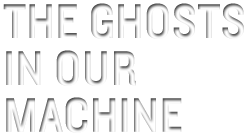
Clothes, cars, houses, books, computers, and cell phones are examples of property. Animals, too, are considered property under the law. Like objects, animals are commodified in global industries such as food and clothing farming, bio-medical research and product testing, and entertainment. Animal’s status as property works against them in legal systems around the world. For example, in Canada, laws against criminal animal cruelty appear under the title “Willful and Forbidden Acts in Respect of Certain Property” (1). This suggests that harming an animal is wrong because it is damaging someone’s property. As property, non human animals receive very limited protection. Their interests, no matter how fundamental, are subordinate to even the most trivial human interests. In 1999, Gary Yourofsky freed fifteen hundred minks from a filthy, decrepit fur factory. Instead of being applauded as a hero for rescuing the miserable animals, Yourofsky was prosecuted for theft of the minks and ordered to pay restitution to the owner (2). The suffering of the minks was rendered lawfully invisible through laws protecting their owners. Criminal laws against cruelty only identify acts as criminal offences if they cause ‘unnecessary suffering’ to animals (3)(4), which means that some suffering is considered necessary.
Compiled in March 2011
Revised in August 2014
1. Government of Canada. Criminal Code of Canada.
2. R. v. Yourofsky[1999] O.J. No. 1901 (Ont. Sup. Ct).
3. UK Animal Welfare Act 2006. Provision of Unnecessary Suffering.
4. Animal Legal & Historical Center. European Convention for the Protection of Pets. Animals: Summary
Sentient beings feel pleasure, pain, fear and attachment. Biologically, sentient beings have a nervous system, which allows them to innately experience these feelings. Sentient creatures will seek pleasure, will react to fear, and most significantly, avoid suffering and pain in order to live. Activists have long pressed for laws that recognize non human animals as sentient beings and give them status in the legal system. Although some laws do exist to protect animals, animals are unable to have representatives go to court on their behalf to advocate for their interests under the law. Some humans (such as children, mentally incapacitated individuals, and even classes of people) as well as entities (such as corporations and trusts) can have their interests represented in court by a representative. It makes logical sense that as sentient beings, animals should be afforded this same privilege. In Canada, animal advocates went to court for a declaration that the City of Edmonton was in violation of animal welfare laws for inadequately housing a lone, unhealthy elephant. Instead of considering the merits of the case, the court ruled the application was an abuse of process: the elephants could not have representatives come to court to advocate for her legal interests. However, on appeal, in a lengthy dissent, the chief justice would have granted standing and allowed the litigants “to speak for animals whose voices are not otherwise audible to the law.”(1) Similarly, in the United States, the Nonhuman Rights Project aims to change the common law status of nonhuman animals from mere “things” to “persons” by going to court and arguing for them. Their first lawsuits were filed in 2013.(2)
Compiled in March 2011
Revised in August 2014
1. Reece v. Edmonton (City), 2011 ABCA 238.





